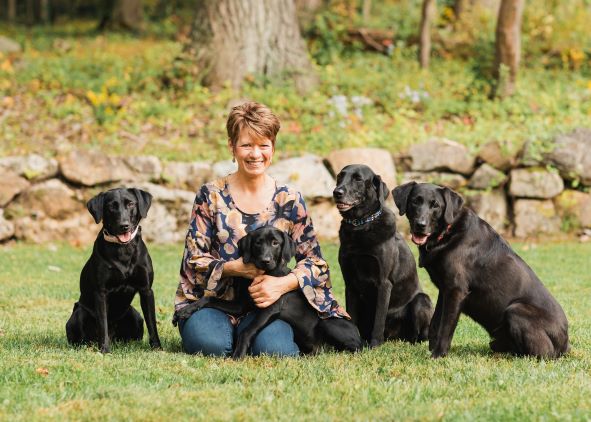Course Details
Most dogs know how to do the exercises. They even have a foundation in engagement. But when they compete, things often fall apart. Competition requires another level of engagement. Dogs must maintain engagement while performing a complex series of behavior chains. Many distractions at trials are unpredictable and cannot be replicated in training. It’s impossible to prepare for every eventuality.
In this class you will learn to bring your dog’s engagement to another level. I will teach you how to get and maintain engagement from the beginning to end of every exercise. We will work on teaching your dog the concept of generalizing engagement. You will learn how to get engagement outside the ring, during your ring entrance and transitions. The goal is for your entire run to be connected and engaged. We will look at implementing skills that will help you regain engagement should you lose it in the ring. We will use a number of games as well as shaping, tricks and offering. I will provide you with a variety of techniques so you can choose what works best for your dog.
To succeed in this course your dog should have a basic understanding of engagement. It’s also recommended that you go to different locations with distractions (can be stores, parks, training buildings, etc.). Whether you are starting out on your training journey, or your dog is a seasoned competitor, this course will bring your dog’s engagement to the next level!
Teaching Approach:
This class will have written and video lectures each week. There will be video examples demonstrating all exercises. Because everyone has their own learning style and teams learn at different speeds, I encourage students to move at their own pace. For the first few weeks, students can work in a smaller space. However, to get the most out of the class I recommend students go to different locations throughout the course. These can include training buildings, stores, parking lots, parks, etc. I am happy to work with you to modify the training to your abilities. A few of the games will require quick physical movement from the trainer for short periods and distances. However, we can always modify games to meet your unique needs.
 Instructor: Petra Ford
Instructor: Petra FordI have been training and competing for several decades in a variety of sports including Hunt Tests, Field Trials, Nosework, Agility and Rally. My first love has always been competition obedience. I have been fortunate to win the AKC National Obedience Championship four times with three different dogs. (Click here for full bio and to view Petra's upcoming courses)


